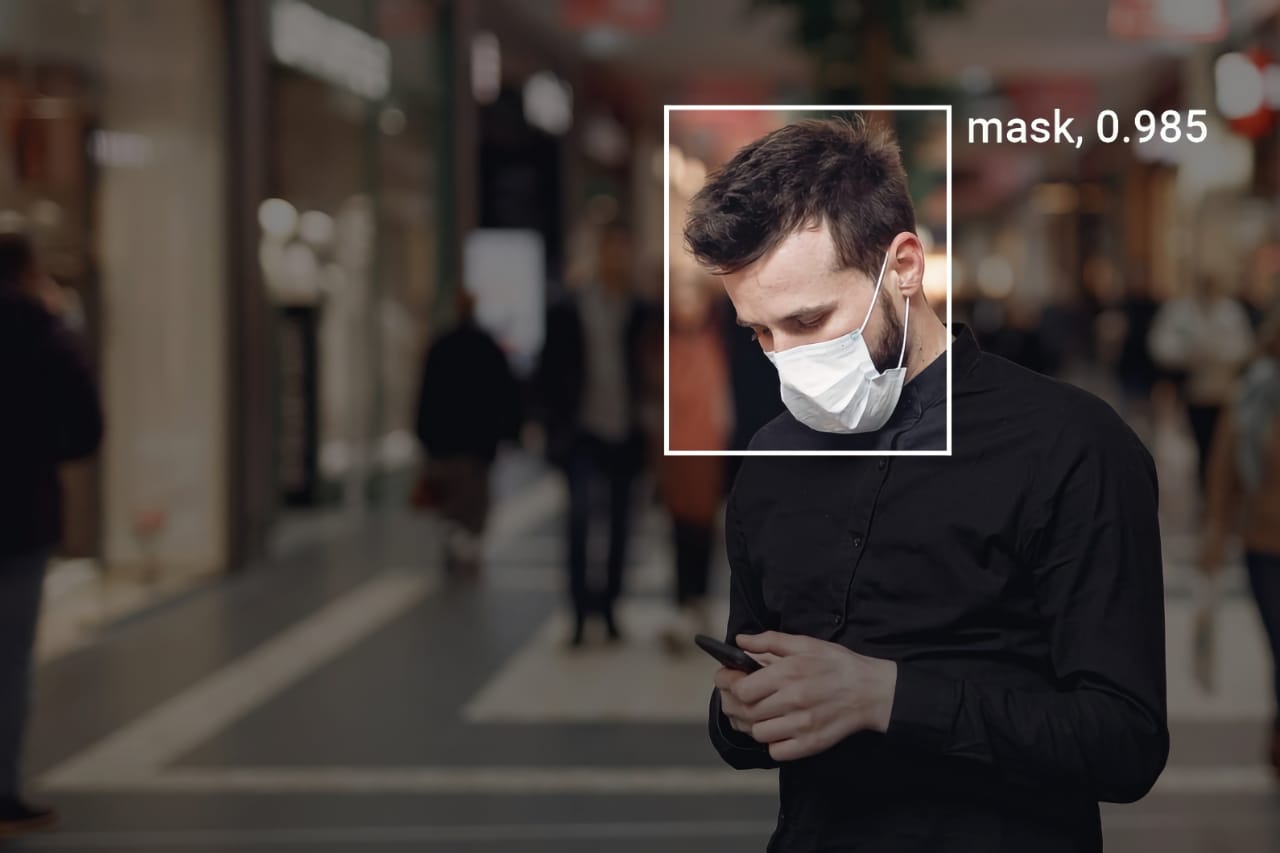What is Mask Detection?
Masked Face Detection is a key strategy of using protective equipment to combat the spread of the coronavirus. Computer Vision systems can help to greatly facilitate the monitoring of compliance and adherence to wearing masks.
Deep learning algorithms are able to accurately detect masked and unmasked faces in real-time video streams of surveillance cameras.
Key Features of Masked Face Detection
A masked face detection model based on Computer Vision is non-invasive, scalable, and comparably easy to implement since the video feed of any camera can be used.
- Detection of masked and unmasked faces with individuals or larger crowds in public places.
- Detect persistent or reoccurring violations of safety protocols in plants, hospitals, or other institutions.
- Track changes over time with metrics to compute a risk score.
- Send alerts and reports to trigger human intervention.
Value of Automated Mask Detection
Deep Learning based equipment detection and inspection is used to increase efficiency and safety, leading to cost savings. Vision-based control is highly scalable across many locations.
- Automated mask adherence monitoring is more consistent and accurate than human inspection.
- Detecting unmasked people increases safety by lowering the risk of transmission of COVID-19 and other infectious diseases.
- Masks or face coverings in the workplace can prevent outbreaks at a facility that would impact productivity or even lead to shutdowns.
- Save costs of manual inspections and avoid fines or penalties.
